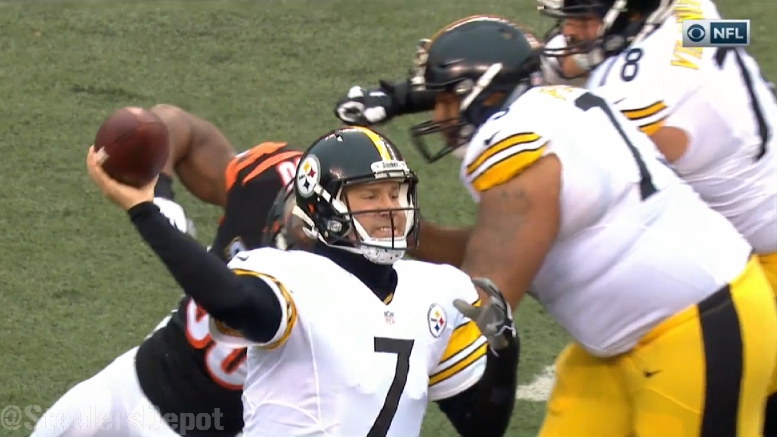When it comes to getting the ball out and down the field while under pressure, literally nobody has done so better than Pittsburgh Steelers quarterback Ben Roethlisberger, according to Pro Football Focus, who earlier this month noted that he has averaged more yards per pass attempt while facing pressure over the course of his career than anybody they have graded.
Using a data range from 2006 through the 2016 season, according to the site’s information, Roethlisberger has averaged a very impressive 7.3 yards per pass attempt on throws on which he was being hurried or on which he took a hit. It should probably go without saying that this does not include the plays on which he was sacked, since, you know, you can’t throw a pass when you’re sacked, but you never know with some people.
Ben Roethlisberger is as oblivious to pressure as any QB in the league pic.twitter.com/QfJ6qioJe7
— Pro Football Focus (@PFF) July 19, 2017
That was better than anybody else in their database, using a baseline of at least 750 dropbacks while facing pressure, which is probably about three seasons’ worth of starter’s snaps under center. The second-most prolific thrower under pressure during the PFF era has been Russell Wilson of the Seahawks, who has averaged 7.1 yards per attempt while under duress.
The third-most successful passer under pressure? Peyton Manning. You might not think so given his tendency to ‘turtle up’ so to speak, when he is facing a threat, including throwing the ball into the ground, but that is what the numbers show. He has averaged 6.9 yards per pass attempt while facing pressure—though of course he didn’t play last year, and he missed an entire season with a neck injury.
Now, this Roethlisberger statistic probably should not be very surprising to Steelers fans who have followed his career, as he has always had somewhat of a backyard approach, particularly early on in his career, to the point at which his wide receivers have had to learn never to give up on a play, because he is still going to look for you once he stiff-arms a defensive end into the ground.
Certainly being the size that he is aids Roethlisberger in this category. Think about it. When you are big enough to shake off the defender that would sack or at least force a smaller quarterback to throw it away, then you’re suddenly left with a pretty clean pocket with the guy on the ground.
Eventually, the receivers are going to be able to find some kind of separation—and often a lot of separation—so he has been able to turn a good amount of pressures into big plays by exploiting his size and his willingness to prolong plays. We’ve known this, but now we have a statistic to quantify it as well.








